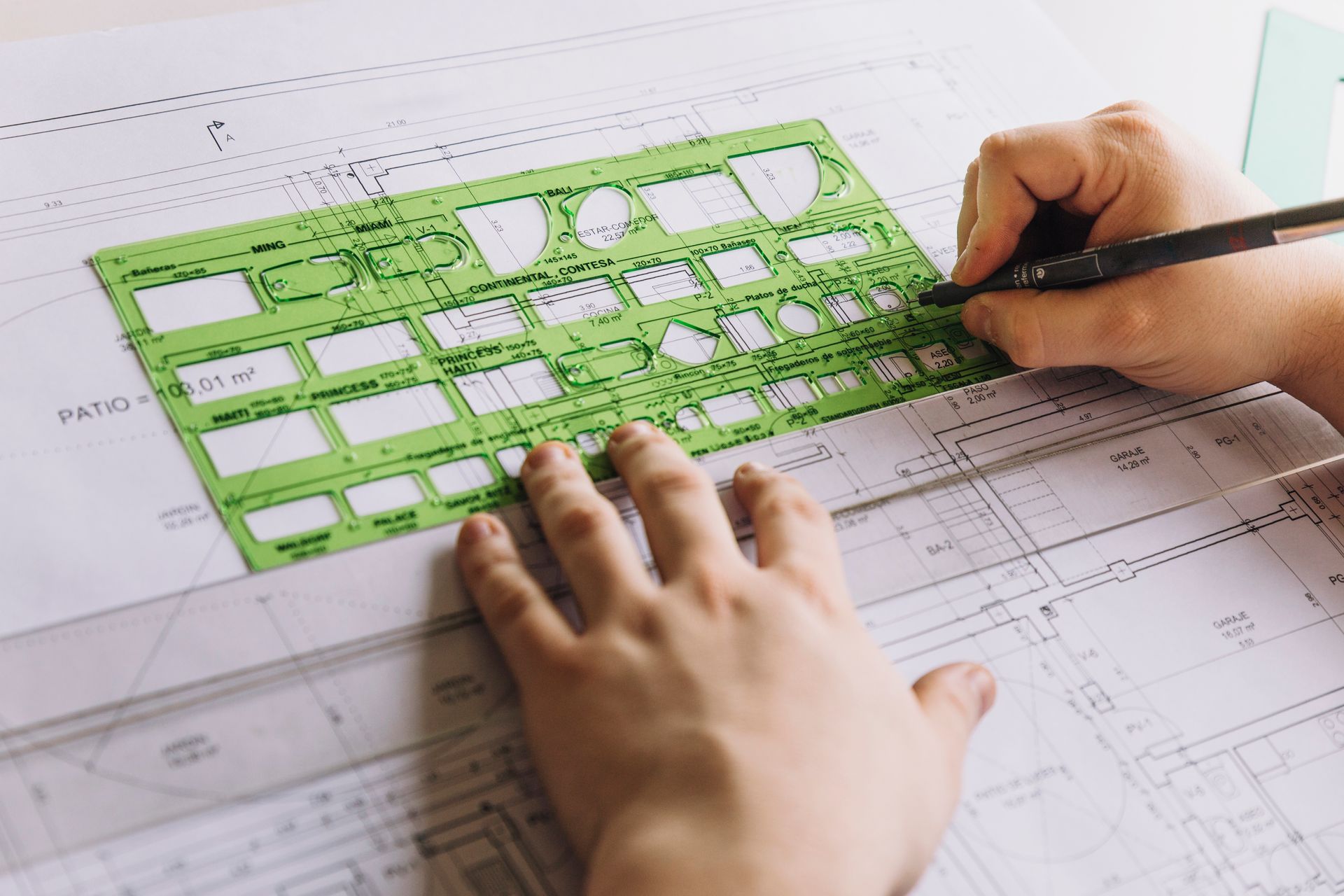Why Is the Fence Permit Plot Plan More Important Than the Design?
Many homeowners get excited about choosing the perfect fence design, from materials to colors to finishes. But before any of those details matter, the fence permit plot plan must come first. This plan is more than just paperwork, it is the foundation that ensures your fence is legal, safe, and approved by the city. Without it, no amount of design will get your fence built the right way.
Rules Decide What Is Allowed
Every city and county has its own set of rules for fences. These rules may cover height limits, distances from property lines, and even what areas can or cannot have fencing. For example, some areas do not allow fences near utility easements or may require a specific setback from sidewalks and streets. A fence permit plot plan outlines all of this on paper, showing that your fence respects both your property boundaries and local regulations. Without it, a project can easily get delayed, stopped, or even removed at your expense.
A Fence Design Alone Is Not Enough
A stylish sketch or rendering may help you picture the final look, but it does not prove that your fence will legally fit on your property. Many homeowners assume a drawing is enough, only to find out later that it misses critical details like easements, utilities, and boundary lines. A design focuses on appearance, while a permit plot plan focuses on compliance. If you start with design alone, you risk building something that looks great but is not approved or legal.
Why Accuracy Matters Most
Fences may look simple, but placing them in the wrong spot can create major issues. For instance, a fence that crosses into your neighbor’s property can lead to disputes and legal costs. A fence that blocks a drainage line can cause water problems. If it sits on an easement, utility companies may remove it without warning. These mistakes cost far more to fix than they do to prevent. A permit plot plan, prepared with accurate property measurements, ensures your fence goes in the right place the first time.
What Makes a Plot Plan More Important Than Design?
The reasons a fence permit plot plan outweighs design can be seen clearly:
- Required for Permits: A certified plot plan is the first document cities request for approval.
- Stops Mistakes: With exact property lines, you remove any guesswork.
- Helps Builders: Contractors rely on plot plans for precise measurements and placement.
- Saves Money: By avoiding fines, rework, and disputes, the plot plan pays for itself.
- Protects Relationships: Proper boundaries reduce the chance of conflicts with neighbors.
Protecting Your Property Value
Your property is an investment, and a fence plays a key role in its value. A poorly placed fence, even if well-designed, can lower that value by creating uncertainty about property lines or causing tension with neighbors. On the other hand, a fence that is built in the right place, backed by a permit plot plan, adds both function and security. Buyers feel more confident in a property that is well-documented, and lenders often prefer properties with no disputes over boundaries.
Why Cities Approve Plans, Not Drawings
Cities focus on compliance and safety, not personal taste. That is why a drawing or sketch, no matter how attractive, does not meet their requirements. A fence permit plot plan shows exactly where the fence will sit in relation to roads, easements, and property lines. This document ensures the project aligns with zoning laws, construction codes, and legal boundaries. Without this proof, a city cannot issue approval, leaving the project stuck at the planning stage.
Building Confidence With Accuracy
Homeowners often underestimate the cost of moving a fence after it has been installed in the wrong spot. Unlike paint color or fence material, placement is not easy to change once posts are in the ground. A permit plot plan gives confidence by removing doubt before construction starts. With accuracy in hand, you can then focus on choosing the right design and materials without fear of running into problems later.
The Cost of Skipping a Permit Plot Plan
Skipping a permit plot plan may seem like a way to save time or money, but the risks are far greater. You could face:
- Legal Fines: Cities can issue penalties for unapproved construction.
- Forced Removal: Authorities or utility companies may require you to tear down the fence.
- Extra Costs: Rebuilding or moving a fence doubles your expenses.
- Neighbor Disputes: Encroaching on someone else’s land can lead to lawsuits.
These risks make the plot plan far more valuable than any design sketch. It is an upfront step that prevents long-term headaches.
Final Recap:
A fence design shapes the appearance, but the fence permit plot plan is what makes the project legal, safe, and lasting. Without this document, even the best design cannot move forward. If you are planning other structures, the same applies to a Deck Permit Plot Plan, where accuracy is just as vital. At RealMapInfo LLC, our certified plot plans meet all requirements, safeguard your property, and help your projects move smoothly. Contact us today to get the right plan for your fence or Deck and start your project the right way.
FAQs:
Q1: Why is a fence permit plot plan important?
It ensures the fence is legal, fits within property lines, and avoids fines or disputes.
Q2: Can I submit a design without a plot plan?
No, cities require an approved plot plan for permits; designs alone are not enough.
Q3: How does a plot plan save money?
By preventing mistakes, legal issues, and rework, it reduces unexpected construction costs.
Q4: What details are shown in a fence permit plot plan?
It includes property lines, setbacks, easements, and exact placement for safe, compliant construction.
Q5: Does a plot plan affect property value?
Yes, a compliant fence adds security and credibility, protecting long-term property value and appeal.












Share On: